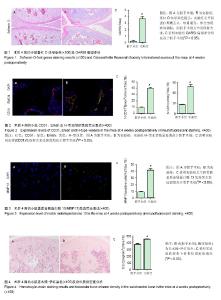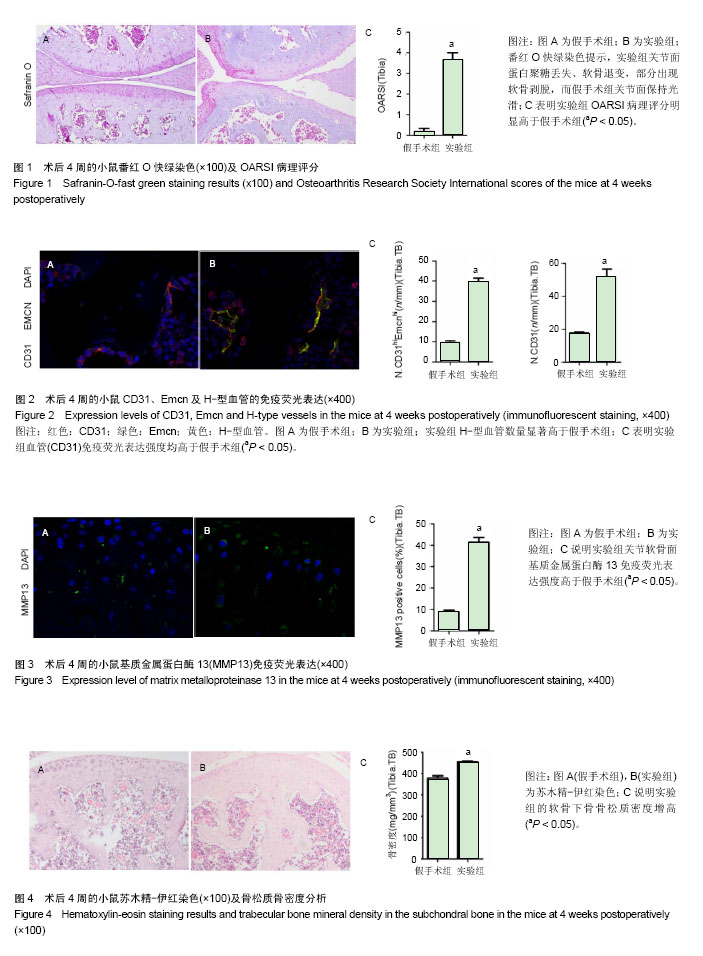| [1] Glyn-Jones S,Palmer AJ,Agricola R,et al.Osteoarthritis. Lancet.2015;386(9991):376-387.[2] Cross M, Smith E, Hoy D, et al. The global burden of hip and knee osteoarthritis: estimates from the Global Burden of Disease 2010 study. Ann Rheum Dis. 2014;73(7): 1323-1330.[3] Felson DT. Osteoarthritis in 2010: New takes on treatment and prevention.Nat Rev Rheumatol.2011;7(2):75-76.[4] Dieppe PA,Lohmander LS.Pathogenesis and management of pain in osteoarthritis. Lancet.2005;365(9463):965-973.[5] Hootman JM, Helmick CG. Projections of US prevalence of arthritis and associated activity limitations. Arthritis Rheum. 2006;54(1):226-229.[6] Nelson AE, Allen KD, Golightly YM, et al. A systematic review of recommendations and guidelines for the management of osteoarthritis: The chronic osteoarthritis management initiative of the U.S. bone and joint initiative. Semin Arthritis Rheum.2014;43(6):701-712.[7] Nagai T, Sato M, Kobayashi M, et al. Bevacizumab, an anti-vascular endothelial growth factor antibody, inhibits osteoarthritis. Arthritis Res Ther.2014;16(5):427.[8] Ashraf S, Mapp PI, Walsh DA. Contributions of angiogenesis to inflammation, joint damage, and pain in a rat model of osteoarthritis. Arthritis Rheum.2011;63(9):2700-2710.[9] Kusumbe AP, Ramasamy SK, Adams RH. Coupling of angiogenesis and osteogenesis by a specific vessel subtype in bone. Nature.2014;507(7492):323-328.[10] Zuo Q, Lu S, Du Z, et al. Characterization of nano-structural and nano-mechanical properties of osteoarthritic subchondral bone. BMC Musculoskelet Disord.2016;17(1):367.[11] Goldring SR. Alterations in periarticular bone and cross talk between subchondral bone and articular cartilage in osteoarthritis. Ther Adv Musculoskelet Dis.2012;4(4): 249-258.[12] 张荣凯,杨禄坤,叶志强,等. 以关节不稳建立的大鼠骨关节炎模型[J]. 中国组织工程研究,2013,17(37):6628-6635.[13] Vasheghani F, Zhang Y, Li YH, et al. PPAR deficiency results in severe, accelerated osteoarthritis associated with aberrant mTOR signalling in the articular cartilage. 2015; 74: 569-578.[14] Zhang Y, Vasheghani F, Li Y, et al. Cartilage-specific deletion of mTOR upregulates autophagy and protects mice from osteoarthritis. Ann Rheum Dis. 2015;74(7): 1432-1440.[15] Dell'Accio F, Sherwood J. PPAR /mTOR signalling: striking the right balance in cartilage homeostasis. Ann Rheum Dis. 2015;74(3):477-479.[16] Huang MJ, Wang L, Jin DD, et al. Enhancement of the synthesis of n-3 PUFAs in fat-1 transgenic mice inhibits mTORC1 signalling and delays surgically induced osteoarthritis in comparison with wild-type mice. Ann Rheum Dis.2014;73(9):1719-1727.[17] 郭达,潘建科,黄伟康,等. 膝骨关节炎软骨下骨微灌注、血管侵入及软骨退变相关研究[J]. 实用医学杂志, 2015,31(18): 3063- 3066.[18] Xu J, Cai H, Meng Q, et al. IL-1beta-regulating angiogenic factors expression in perforated temporomandibular disk cells via NF-kappaB pathway. J Oral Pathol Med. 2016;45(8): 605-612.[19] Pesesse L, Sanchez C, Henrotin Y. Osteochondral plate angiogenesis: A new treatment target in osteoarthritis. Joint Bone Spine.2011;78(2):144-149.[20] Murata M, Yudoh K, Masuko K. The potential role of vascular endothelial growth factor (VEGF) in cartilage. Osteoarthritis and Cartilage.2008;16(3):279-286.[21] 郭静,张娜,秦丽娟,等. 膝骨关节炎患者中IL-18、VEGF和NF-κB的表达及意义[J]. 实用医学杂志, 2013,29(18):3024-3026.[22] Fang W, Friis TE, Long X, et al. Expression of chondromodulin-1 in the temporomandibular joint condylar cartilage and disc. J Oral Pathol Med.2010;39(4):356-360.[23] Zhang X, Prasadam I, Fang W, et al. Chondromodulin-1 ameliorates osteoarthritis progression by inhibiting HIF-2α activity. Osteoarthritis Cartilage. 2016;24(11):1970-1980. [24] 袁雪凌,汪爱媛,孟昊业,等. 兔膝骨关节炎进程中软骨下骨血管生成的实验研究[J]. 中华关节外科杂志:电子版,2013, 7(6): 810-814.[25] Ashraf S, Mapp PI, Walsh DA. Contributions of angiogenesis to inflammation, joint damage, and pain in a rat model of osteoarthritis. Arthritis Rheum. 2011;63(9):2700-2710.[26] Hamilton JL, Nagao M, Levine BR, et al. Targeting VEGF and Its Receptors for the Treatment of Osteoarthritis and Associated Pain. J Bone Miner Res.2016; 31(5):911-924.[27] Mapp PI, Walsh DA.Mechanisms and targets of angiogenesis and nerve growth in osteoarthritis. Nat Rev Rheumatol. 2012; 8(7):390-398.[28] Ramasamy SK, Kusumbe AP, Wang L, et al. Endothelial Notch activity promotes angiogenesis and osteogenesis in bone. Nature.2014; 507(7492):376-380.[29] Xie H, Cui Z, Wang L, et al. PDGF-BB secreted by preosteoclasts induces angiogenesis during coupling with osteogenesis. Nature Medicine.2014; 20(11):1270-1278.[30] Ramasamy SK, Kusumbe AP, Schiller M, et al. Blood flow controls bone vascular function and osteogenesis. Nature Communications.2016,7:13601.[31] Wang M, Sampson E R, Jin H, et al. MMP13 is a critical target gene during the progression of osteoarthritis.Arthritis Res Ther. 2013;15(1):R5.[32] Zhen G,Cao X.Targeting TGFβ signaling in subchondral bone and articular cartilage homeostasis. Trends Pharmacol Sci. 2014;35(5):227-236.[33] Yuan XL, Meng HY, Wang YC, et al. Bone-cartilage interface crosstalk in osteoarthritis: potential pathways and future therapeutic strategies. Osteoarthritis Cartilage.2014; 22(8): 1077-1089.[34] Lories RJ, Luyten FP.The bone-cartilage unit in osteoarthritis. Nat Rev Rheumatol.2011;7(1):43-49.[35] Jiao K, Zhang M, Niu L, et al. Overexpressed TGF- in Subchondral Bone Leads to Mandibular Condyle Degradation. J Dent Res.2014;93(2):140-147.[36] Cui Z, Crane J, Xie H, et al. Halofuginone attenuates osteoarthritis by inhibition of TGF- activity and H-type vessel formation in subchondral bone. Ann Rheum Dis. 2016;75(9): 1714-1721. |

